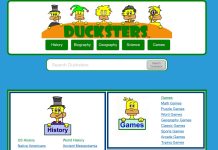
Microsoft dynamics customer relationship management software is principally an IIS based website application with customer server architecture and that can be retrieved by Internet explorer versions. It ropes activities of marketing, sales, and help desk though Microsoft claims that by using its registered technologies founded on.Net framework can improve this product to support additional related activities as well.
Microsoft means its CRM software to be applied as XRM platform by its specialized partners for creating it versatile to handle actions those are beyond usually supposed customer centric activities. This CRM software is accessible in numerous versions for clients and partners and has skyward compatibility that allows its customers to simply switch on the higher version as their necessities increase.
Microsoft dynamics CRM is obtainable in some languages and is quite integrated with Microsoft products like Microsoft and MS office windows small business server. This CRM application is effortlessly customizable to amend as per the needs of the user and 3rd party tools can be combined for extra features.
The interior customization of Dynamics CRM is simple as well. You can build profitable solutions with Microsoft dynamics CRM developers to accept a well-organizedand easy integrated business method. Its forms can be modified for offering accustomed or simply comprehensible looks, business work flow can also be modified, custom objects can be mixed to support additional activities, and this application can send E-mails and increase alert alarms for subsequent step in the activity or imminent work
E-mail campaigns can be achieved effortlessly and answers can be tracked easily service preparing offers support to each and every activities from dispatching, logging to chasing and follow-up.
Why CRM is so important?
There are a many reasons why looking out for bugs in your development atmosphere is good but the important reason is time. It takes lengthier to look out and fix production bugs than development bugs as shown by this familiar graph.
At its core, customer relationship management (CRM) is all of the actions, technologies and strategies that corporations use to manage their communications with their past potential customers and as well as the current ones.
CRM aids businesses to create a relationship with their clienteles that, in turn, makes customer and loyalty retention. As customer revenue and loyalty are both qualities that touch a corporation’s revenue, CRM is an organization strategy that outcomes in augmented profits for an occupational.
At its important, a CRM tool makes an easy user interface for a group of informations that aids businesses identify and connect with clients in an accessible way.
Below are the reasons to not let bugs out of your growth environment
Customers lose self-assurance when they see bugs
When clients check bugs, it makes them question the excellence of the customizations being made and the challenging procedure which has wasted the bug. Bugs aggravate the developer and customer for many reasons nonetheless bugs can stop the testing and use of some functionality, reducing the drive of the development and the set of changes.
Knowing the business logic fades however the code remains the same
When you are functioning on a functionality you are in the flow, you understand the business logic, you comprehend the code, and you are an emerging machine. In a few days of time your information of the business logic will have worn out, as will some of the knowledge of the code. In numerous techniques knowing how the code works is simple as you can follow the code nonetheless you may not remember what the code is doing and what the reason for it to do is.
Time
When a developer gets a bug whilst testing and writing the code, the developer can fix it rapidly while they know the business code and logic. If the bug is seen later the developer will require rereading the specs, in this case you must take help of business analyst and learn the rest of the code so they can fix it quickly.
Below are few points where you can implement CRM
Step 1: Collecting info
The priority must be to capture the info you need to recognize your customers as well as know their behavior.
Step 2 – Storing info
The most operational method to store and manage your customer information is in a relational database
Stage 3 – Accessing information
With information collected and stored centrally, the subsequent phase is to make this info available to staff in the most valuable format.
Stage 4 – Analyzing customer behavior
Using informations mining tools in worksheet programs, that examine data to classify and patterns relationships, you can start to outline clients and grow sales methods.
CRM Software is difficult and it’s problematic for one designer to comprehend and predict the numerous combinations. Developers won’t be able use the software in the similar way as the end user; incorporation testing will test the software exactly the kind of what the customer will use it.











